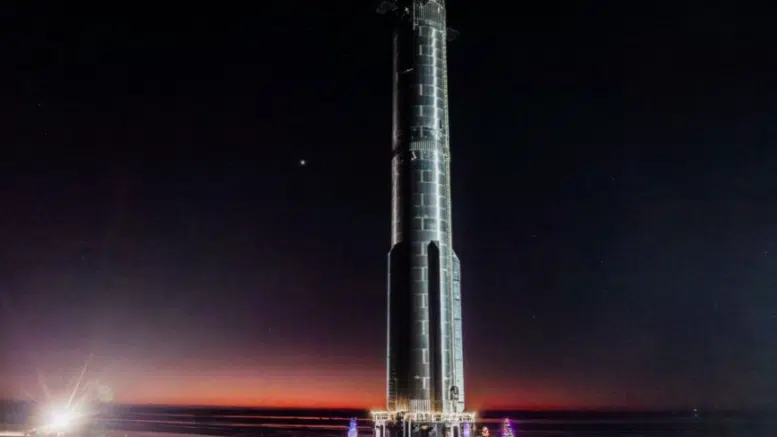SpaceX is forging ahead with its ambitious Starship program, demonstrating a remarkable pace of development as it gears up for a third test flight just one month after the second. The recent test involved a static fire of Starship serial number Ship 28, where the rocket’s six engines ignited for a brief yet seemingly nominal period at SpaceX’s South Texas Starbase facility. The company has been working diligently to overcome challenges encountered during previous flights, with each iteration of the Starship rocket serving as a critical step towards the development of a fully operational and reusable spacecraft.
This rapid progression is indicative of SpaceX’s commitment to pushing the boundaries of space exploration and harnessing the potential of Starship for future missions. The Starship program, led by SpaceX founder Elon Musk, envisions the rocket as a versatile spacecraft capable of carrying both crew and cargo on a variety of missions, from lunar exploration to interplanetary travel. The recent static fire test of Ship 28 is a crucial step in preparing the rocket for its next flight, known as “Integrated Flight Test 3.”
Notably, SpaceX is eyeing the first quarter of the upcoming year for this third test flight. Kathy Lueders, SpaceX’s general manager for the Starbase launch site, expressed the company’s aspirations, stating, “It would be great if we were in the first quarter, definitely.” However, she also acknowledged the ambitious timeline proposed by Elon Musk, suggesting a potential launch by the end of December. The fast-paced schedule underscores SpaceX’s dedication to pushing the boundaries of space technology.
The upcoming flight, designated Integrated Flight Test 3, aims to extend the boundaries of Starship’s capabilities. This includes flying further into a trajectory that will culminate in a controlled landing into the ocean north of Kauai, Hawaii. Additionally, there are speculations that the mission might incorporate an in-space propellant transfer test, although official confirmation is yet to be provided by SpaceX.
Despite the achievements and progress, the space community remains keenly interested in understanding the technical intricacies behind the anomalies encountered in previous Starship flights. The second test flight in November marked a significant improvement over the initial attempt in April 2023, highlighting advancements in engine reliability and successful execution of complex maneuvers. However, details about the anomalies that led to the failure of the Starship upper stage and the subsequent loss of the booster remain undisclosed.
SpaceX has yet to receive regulatory approval for the third Starship launch. The Federal Aviation Administration (FAA), responsible for overseeing mishap investigations, classified the November flight as a “mishap” but noted no injuries or public property damage. The FAA is closely monitoring SpaceX’s adherence to its FAA-approved mishap investigation plan and other regulatory requirements.
As SpaceX navigates the intricacies of regulatory approval and technical challenges, the world watches with anticipation, recognizing the transformative potential of the Starship program in shaping the future of space exploration. The dynamic developments surrounding Starship underscore SpaceX’s role as a trailblazer in the space industry, pushing boundaries, and redefining what is possible in the realm of space travel.

